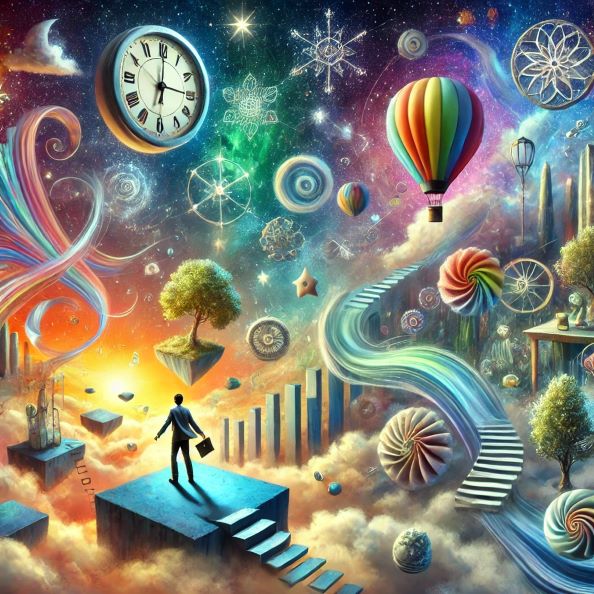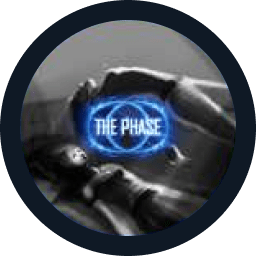I’ve highlighted the key phrases “lucid dream stories” and “best lucid dream stories” in the translation, preserving the text’s structure and conversational tone. Here’s the deep translation with careful attention to tenses and sentence flow:
I’ve emphasized many times the importance of the full reality of experiences in the context of “out-of-body” states, and I will continue to highlight this point. It is a key characteristic of such experiences. Many people think these sensations are nothing more than a dream, but this is a mistaken belief, leading to confusion that distorts perception and hinders genuine understanding. Many practitioners and authors may overlook this aspect in their writings, which could explain the limited spread of “out-of-body” journeys — nobody wants to engage in something unclear or vague. However, these states truly hold significant value, and I intend to describe them in detail in this book, drawing from examples of my own experiences. I’m confident this section will be helpful and assist you in appreciating the practice of lucid dream stories. For those looking for stories about lucid dreaming, this chapter will serve as a vivid and insightful guide.
Nature of Experiences in Lucid Dream Stories
The main misunderstanding for people encountering the separation of consciousness from the body for the first time is a lack of understanding about the reality of what’s happening, which includes every detail down to the smallest nuance. If you suddenly “fly up” and find yourself near the ceiling, in that first moment, you’ll be convinced it’s a real flight, not an illusory experience. It’s only when you realize your physical body remains motionless that you understand this is truly a separation of consciousness, which may trigger fear or even thoughts of impending death.
The most important thing to remember is the complete absence of connection to the physical body and its sensations during this phase. In such a state, you can only guess where your body lies in the bed but cannot feel which side it is on, how your arms and legs are positioned, whether there is light or darkness, or even the orientation of your body in space. However, don’t worry — nobody can harm your body in this state. If you’re lying uncomfortably or something interferes with your comfort (like a numb hand or cold), it will prevent you from fully entering a deep phase, and you’ll sense the discomfort. Still, even in the deepest states, the level of detachment from the body is similar to what is experienced in deep sleep, and it’s no more dangerous than an ordinary dream. Only an experienced person can deliberately reach a state where they can be kicked without awareness.
And yet, there is one constant link between the physical and phantom bodies. Breathing is a critical physiological process that can be controlled and influences the state of life. That’s why breath control remains intact in any condition. Moreover, through breathing, one can regulate the depth of immersion into the phase. Breathing ties both worlds through physical sensations. For instance, if you are suffocating in the phase (as part of the story), it will feel utterly real. Conversely, if your physical body lacks air, it will affect your phase experience and might cause certain sensations.
Lucid Dream Story №56
…I was lying on the bed, feeling steady vibrations. Without deepening the experience, I rolled towards the wall and partially entered it (at that time, walls were a difficult barrier for me). I felt the cold concrete, but then suddenly had trouble breathing when my chest entered the wall. The information about the hardness of the concrete in my mind prevented me from expanding my chest to breathe, and I started suffocating. Real concern for my life emerged. Fortunately, the phase wasn’t deep, and I quickly returned to my body…
Lucid Dream Story №68
LMP. After another awakening, I clearly felt that I was in a state with every chance of turning into a phase. I tried to induce vibrations by focusing, and they quickly manifested with enough strength for me to proceed to separation immediately. I achieved this simply by flying upward. Since I felt the need to deepen the state, I decided to use swimming movements. Soon, I saw my room. It was dark, but I could clearly make out all the objects as I continued swimming through the space as if the air in the room were water. The diving sensations became entirely real. Instinctively, I held my breath, which led to me starting to suffocate. At first, I didn’t understand what was happening and was genuinely afraid of dying. Later, I realized that in the phase, you can breathe underwater—or in water—if you believe it. I started breathing and stopped suffocating. The sensation of water in my lungs was unusual, but it acted like air…
These best lucid dream stories illustrate how real sensations can become within these states, and why they’re often mistaken for something far more physical than a dream.
It’s also incorrect to assume that the reality of experiences in the phase is limited only to visible images. Though vision does indeed play a key role.
In everyday life, we receive 80-90 percent of our information about the world through sight, even during conversations where the eyes help decipher the true meaning of words by perceiving non-verbal cues that make up about 40 percent of communication. Often, this occurs on a subconscious level, and the numbers may surprise. In the phase, vision plays an equally significant role. It is one of the most vivid aspects of these experiences. The images are so realistic that at times it’s hard to believe they’re not genuine, which can lead to strong excitement and even shock. I have had many out-of-body experiences, and even now, I’m often enthralled by simply observing my surroundings, finding it hard to believe that I’m actually seeing this. The realization that none of this exists in the physical world, yet it’s so real, leads to confusion. When you see it, there’s no doubt in the reality of this world, though it does come with certain peculiarities.
It’s important to note that sensations in the phase not only match those we experience in the physical world but can even be more intense. This is because all sensations are directly formed in the brain’s cortex, bypassing the distortions that arise when signals are transmitted from receptors. You could say that feelings in the phase are more vivid, intense, and provide extraordinary pleasure. This allows you to experience events with incredible detail, including bright sensations of joy and even pain. This applies to all the senses.
Since sensations in the phase are so vivid, simply observing the environment can bring pleasure. This is especially important for people with poor vision, who can see with great clarity. The images are not only striking in their clarity but also in their detail. In the phase, objects do not lose sharpness when approached, as happens in computer games where details become schematic. You can take any object, bring it close to your eyes, and see details that are impossible to notice in real life. For example, you can grab any book from the shelf and read it, examine the skin cells on your hands, etc. The colors are also astonishing in their richness and variety. In the phase, there are no limits to sight—this is confirmed time and time again. That’s why so many stories of lucid dreaming include moments of awe sparked by seemingly mundane visuals that take on extraordinary clarity and beauty.
Lucid Dreaming – Books from Authors-Practitioners
Recommended reading
Things that help you lucid dream









